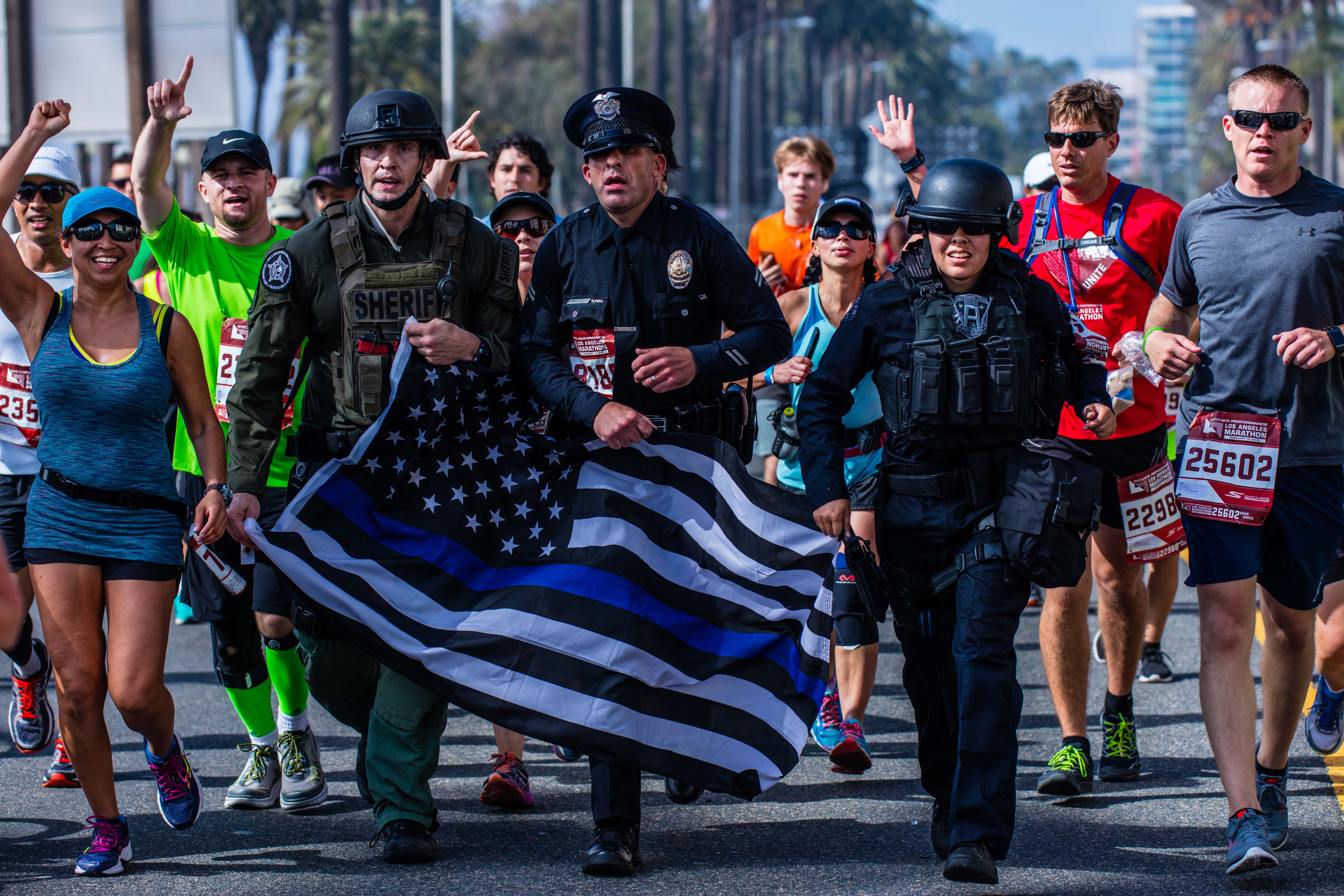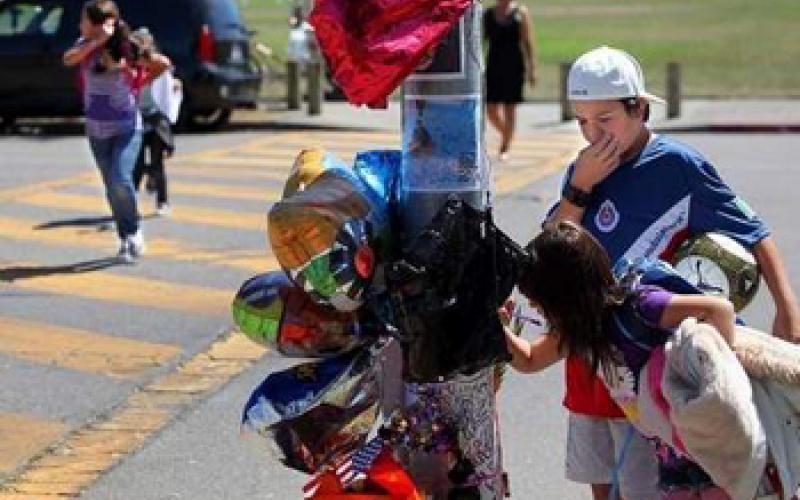Armando Jimenez, 13, and his sister, Ashley Jimenez, 7, stop to look at the memorial site for 4-year-old Christopher "Buddy" Rowe. (Christopher Chung / PD)
In April we warned of the danger of disregarding the State Vehicle Code requirement to impound the vehicles of unlicensed drivers. We still believe now, as we did then, that police department policies that flout the code threaten drivers’ safety and pose significant liability risks to cash-strapped cities.
Our fears about this practice were recently realized in Santa Rosa, California, but it could just as easily happen in Los Angeles. According to a story in Santa Rosa’s Press Democrat, the police department in that city put an officer in the difficult position of having to decide whether or not to impound unlicensed driver Marcos Lopez Garcia’s car. The car was not impounded, and as the story reports, it is suspected that five days later, the 22-year-old Lopez Garcia was behind the wheel of the vehicle when he was involved in a hit-and-run crash that killed a young boy.
Lopez Garcia was first cited for driving without a license on June 25, 2010, when he was stopped at a police checkpoint. His vehicle was impounded for 30 days, according to police and court records. He was then pulled over for speeding on August 13, 2011, and found again to be driving without a license – a misdemeanor offense. The officer, acting within department policy, did not impound the vehicle and instead allowed a licensed person to retrieve it. Lopez Garcia was cited and ordered not to drive a vehicle. This policy had deadly consequences on Aug. 18 when, as it is suspected, Lopez Garcia plowed through a crosswalk and struck 4-year-old Christopher “Buddy” Rowe.

4-year-old Christopher "Buddy" Rowe
This decision was within department policy, just as it would be at LAPD. A federal court ruled in an Oregon case that law enforcement agencies may not impound a vehicle if the only offense is unlicensed driving. One exception, which we encourage officers to consider, is the “community caretaker” doctrine, which permits law enforcement to impound a car when it poses a threat to public safety, is parked illegally or would be vandalized imminently if left in place.
The value and wisdom of impounding vehicles driven by unlicensed drivers is twofold. First, an unlicensed driver willing to ignore the law is, at least temporarily, less likely to further violate this law because he or she does not have access to the impounded vehicle. Second, the cost and inconvenience of recovering an impounded vehicle discourages people without licenses from driving.
The Santa Rosa tragedy shows that unlicensed drivers are dangerous drivers. Law enforcement agencies throughout California need to think long and hard about the ramifications of policies that allow unlicensed drivers access to vehicles that state law says they may not operate on California streets and highways.
We agree with the comments on the dangers of unlicensed drivers that Chief Charlie Beck made during a discussion about a recent DMV operation that resulted in the arrest of five people suspected of producing and selling fake driver licenses and identification cards. The Chief said that the operation was “a threat to not only public safety, but national security,” and added that the shuttered illegal operation “was putting dangerous drivers on the road and endangering the public.”











